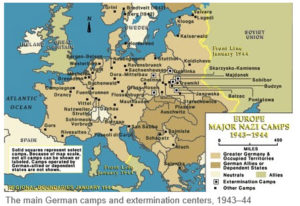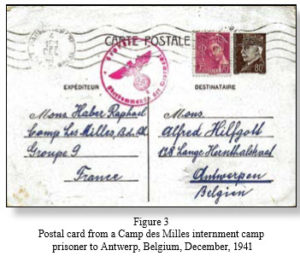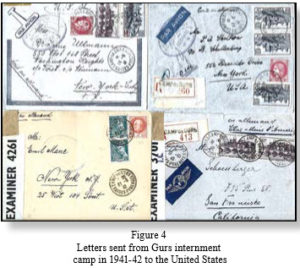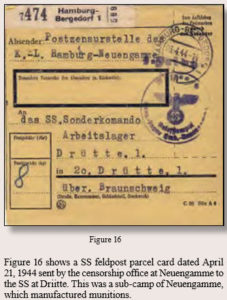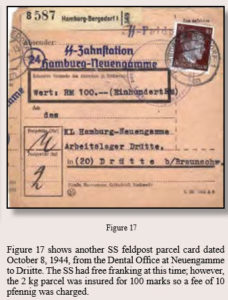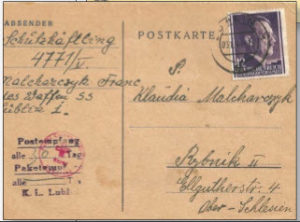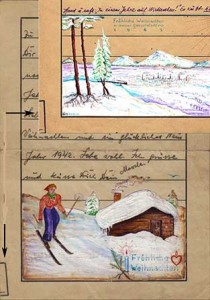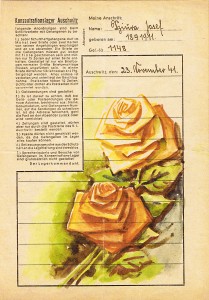HOLOCAUST
Thematic PHILATELIC
Presentation
HOLOCAUST
1933 – 1945
Camps
- Concentration camps
- Extermination camps
- Huge Number of CAMPS AND GHETTOS
- “… cataloged some 42,500 Nazi ghettos and camps throughout Europe, spanning German-controlled areas from France to Russia and Germany itself, operating from 1933 to 1945.” (Wikipedia, Nazi concentration camps).
Ghettos
Refugees
Other
Images Holocaust
1933-1945
Camps
The Nazis made a distinction between Concentration and Extermination camps (extermination camps and death camps were interchangeable).
Wikipedia lists 8 Types of camps
- Early camps
- State camps
- Hostage Camps
- Labor camps
- POW camps
- Camps for the so-called “rehabilitation and re-education of the Poles”
- Collection and Transit camps, and
- Extermination Camps.
- none of the categories were independent, and many could be a mixture of many of the above
- all camps had some parts of an extermination camp
- systematic extermination of new arrivals were only in specialized camps.
(Wikipedia Concentration camps
See “REFERENCES” at bottom of the page).
(Wikipedia Extermination camp
See “REFERENCES” at bottom of the page).
Camps
Concentration and
Extermination Camps
Nazi concentration camps, Wikipedia.
Camps
Examples of Camp Mail
Camps
Concentration Camp
Vichy France During the Holocaust.
The Israel Philatelist, Summer 2018, p35, Figure 3
Camps
Concentration Camp
Vichy France During the Holocaust.
The Israel Philatelist. Summer 2018, p. 35, Figure 4.
Camps
Concentration Camp
Mail to and from the SS – Part 2.
The Israel Philatelist, Summer 2015. Page 42, Figure 16.
Camps
Concentration Camp
Mail to and from the SS – Part 2.
The Israel Philatelist, Summer 2015. Page 42, Figure 17
Camps
Extermination Camp
Figure 26
Front of mailed card from a prisoner in Majdaneck to his wife in Rybnik, Upper Silesia acknowledging receipt of a parcel.
A Postal History Perspective of Poland in the Holocaust – Part 3.
The Israel Philatelist, Fall 2015.
PP 22-23, Figure 26.
Sample from Link
Sooner or later, most collectors of German concentration camp mail will run across prisoner mail objects that have been adorned with illustrations. These illustrations tend to fall into certain categories, with holiday-related drawings or paintings being the most prevalent. Their exact origin is still something of a mystery. The simplest explanation, that a prisoner wished to communicate something more than words can convey to family and friends, is certainly true up to a point. However, in the twisted world of the concentration camps few things were truly simple. In general, prisoner mail rules forbade the inclusion of illustrations or photographs in both outgoing and incoming mail. Prisoners could face suspension of mail privileges, or even severe beatings, for running afoul of these regulations. Thus, when such illustrations are found it usually indicates that a prisoner either had special privileges within the camp, or decided to take a considerable risk with the censor.
Sample from Link
There were numerous artists incarcerated at Auschwitz, and through various means many of them were allowed to pursue their art. The most easily understood arrangement involved painting or decorating at the command of the SS, usually for the camp art museum. 5killed prisoners such as these were usually held in higher regard by the SS, at least temporarily. As a result they were sometimes allowed to paint or draw on their own, provided the subject matter did not violate regulations.
Other artistic prisoners drew in secret, showing their work to no one out of fear of almost certain retribution. Penalties included beatings and the suspension of mail privileges for months at a time. For many the motivation was simply to forget their surroundings and for the moment lose themselves in painting.
REFERENCES
Nazi concentration camps, Wikipedia.
- https://en.wikipedia.org/wiki/Nazi_concentration_camps
- Retrieved from “https://en.wikipedia.org/w/index.php?title=Nazi_concentration_camps&oldid=863103604“
Extermination camps, Wikipedia.
- https://en.wikipedia.org/wiki/Extermination_camp
- Retrieved from “https://en.wikipedia.org/w/index.php?title=Extermination_camp&oldid=866851931“
The Holocaust, Wikipedia.

